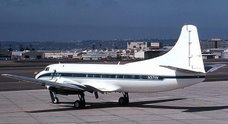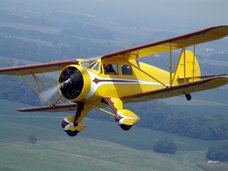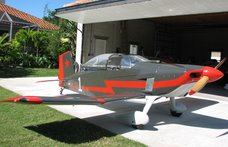Cessna Lite Nears Tunnel's End
Let's agree on one thing: The FAA screwed up capping the Light Sport Airplane (LSA) Maximum TakeOff Weight (MTOW) at 1320 pounds. Where'd that arbitrary number come from? Committee, no doubt. That 1320 kept the venerable Cessna 150 (C150) off the list, leaving first-time fliers to scrounge for low-tech (although highly desirable) antiques such as the Luscombes, Aeronca Champs and Taylorcrafts. All are worthy sport machines, but the C150 would've been a logical candidate for inclusion. Who ever said the FAA was smart?
That's today's Quiz Question. You have 10 minutes to explain in 100 words or less: Who ever said the FAA was smart?
While you're thinking, consider the new Cessna LSA entrant, the Cessna SkySnatch (TM) 162: Price-- $109,500 (about the price of five good, used C150s with no more than 10,000 hours on the airframes). This aluminum LSA (file photo of something else, upper right**) will have the same size Continental O-200 engine as the older C150s (yes, Cessna plans an O-200D ? So what? Same thing only lite (TM) ).
In keeping with making LSAs Gameboy (TM) -friendly, the C162 will sport a Garmin G300 avionics package with high-speed Internet and latte dispenser.*
Instead of an aluminum prop, the Cessna 162 will have a two-blade composite prop. All fine. Now, here's where we really disagree with Cessna: The C162 will have a castering nose wheel, adjustable rudder pedals, painted interior plus gull-wing doors. More on those in a moment. Cessna says this $109k+ LSA will cruise up to 118 knots and have a maximum (outta gas) range of 470 NM. Useful load is currently 490-pound with a 24-gallon useful fuel load...
Our Analysis:
Since when is 24-gallons useful? Or how can 490 pounds be a useful load in today's obese population? I guess you leave those 24 "useful" gallons behind. Or hire a starving CFI; lots of those around.
Overall, the C162 Lite sounds like a C150 with fancy avionics (what was wrong with old ARC radios? Students still need to practice unexpected NORDO; ARC always provided valuable lessons in silence.)
Gull-wing doors sound pretty, but will the CFI get to slam them shut before flight? The old C150 doors were a great stress reliever: "Just follow the pre-takeoff checklist, Mrs. Azzetti (Slam!) It's the faded plastic thing under the seat (Wham!). We've covered this before." (Blam! Door finally latches, checklist complete).
Painted interior? Where's the creaking Royalite (TM)? Can't be a true Cessna without cracked plastic....
I'll bet Cessna won't even include a dash-mounted rear-view mirror that always points at the floorboards.
Is there a cigarette lighter? Or is this Cessna Lite too PC to allow CFIs to smoke unfiltered Luckys while the student struggles beneath a hood made from an old Clorox bottle?
Can you even buy unfiltered Luckys anymore?
Does this mean no ashtrays, either? Where, then, does the pilot stuff pencils and gum wrappers?
What about ventilation? The gull-wing doors may look cool, but will they seal out the sky, starving the crew for oxygen? Will the windows open so students can barf? Will there be Cessna-style wingroot vents to duct-tape shut in winter and provide a nesting place for hornets in summer?
Safety Features:
Will the C162 stall horn still sound like an indecisive fart passing through an oboe?
Will the doors pop open in flight? Probably not, thus depriving students of that valuable "Just fly the airplane" experience after one explodes on takeoff.
Castering nosewheel? Please. Shopping carts have castering nosewheels. I want something that shimmies on landing to remind the student to hold the nose off.
And I want real Cessna 150 flaps (40 degrees) that can hang a student pilot on final to a 12,000-foot runway for 20 minutes while airliners wait. I want flaps that prevent any chance of a go-around.
Well, what can you expect for $109,000 (subject to change) plus tax? And a 2009 delivery date, maybe.
Shame they didn't make it a T-tail...
Still, I'll bet Martha King (TM) will adore the new C162. So, I'm sold.
I need a smoke....
--PB
***
Dateline Oshkosh: Paul Berge, cranky-editor-on-the-lam, Hangar Flying Theater ©, all rights reserved, but feel free to pass this around. Just don't tell the FAA.
*Not verified
**Photo of Larkin Skylark at Watsonville, Ca., 1976 © Paul Berge, Ahquabi House Publishing, LLC, all rights reserved.





